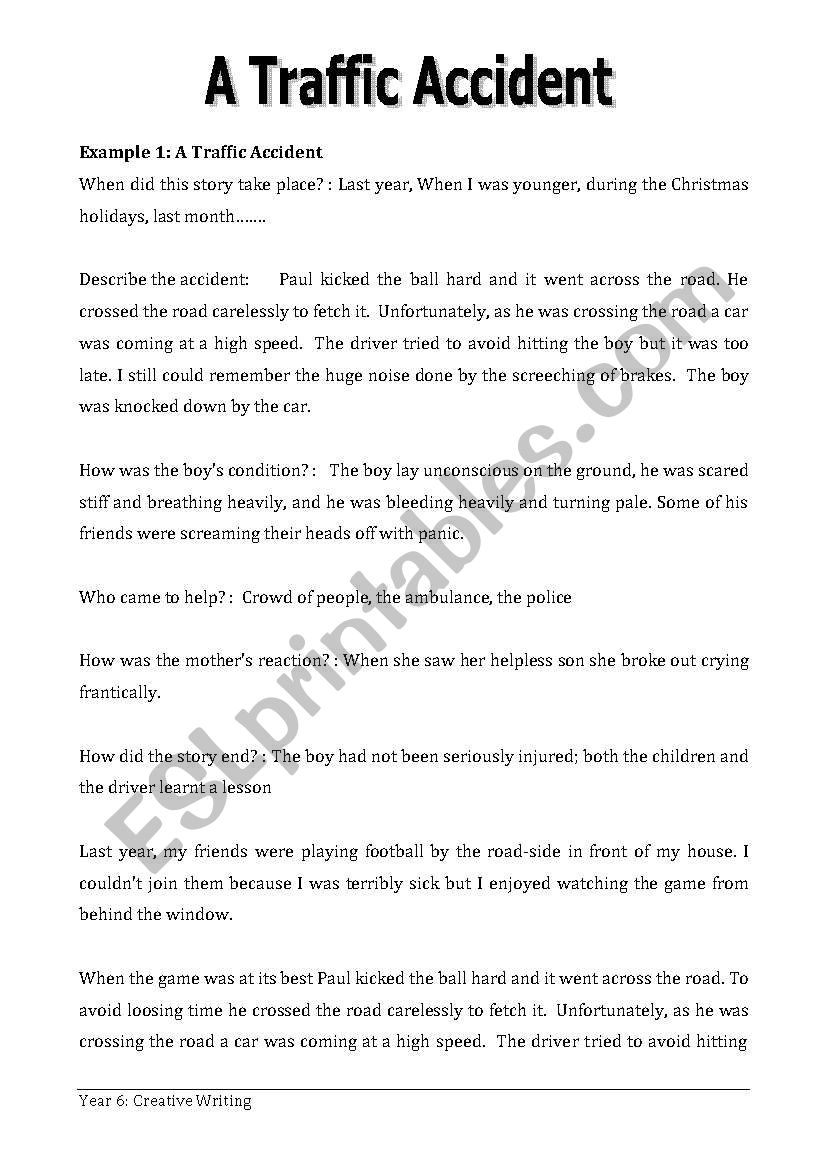In the relentless symphony of life, moments of profound change often lurk in the shadows. One such moment is a car crash, an event that can shatter the familiar and leave an enduring mark on our hearts and minds. Describing a car crash can be an emotionally charged endeavor, but it is often necessary to fully grasp its ramifications. In this comprehensive guide, we delve into the intricacies of describing a car crash, providing both emotional resonance and practical insights.

Image: edgarancebarajas.blogspot.com
Defining the Inexpressible: What is a Car Crash?
A car crash, also known as a motor vehicle accident, is an unintended collision between two or more vehicles or objects. It can range in severity from a minor fender-bender to a catastrophic event. The consequences of a car crash can be far-reaching, affecting physical and mental health, relationships, and financial security.
The Emotional Aftermath: Weaving the Tapestry of Loss and Trauma
The aftermath of a car crash can be a tumultuous tapestry of emotions. Shock, fear, anger, and grief weave a labyrinth of complex feelings. The physical and emotional scars can linger long after the initial impact, leaving victims grappling with the echoes of trauma.
In describing a car crash, it is crucial to capture the raw emotions it evokes. Use vivid language to convey the suddenness of the impact, the deafening screech of metal on metal, and the chaotic aftermath. Describe the confusion and fear that engulf victims as they struggle to comprehend the shattered remnants of their former reality.
Conveying the Physical Devastation: Portraying the Wounds of Collision
The physical consequences of a car crash can be equally devastating. Graphic descriptions of mangled vehicles, shattered glass, and broken bodies can create a visceral sense of the event’s destructive power. Focus on the injuries sustained, whether minor cuts or life-threatening wounds. Describe the pain, suffering, and the subsequent medical interventions that victims undergo.

Image: slideshare.net
The Ripple Effect: Unraveling the Wider Impacts of a Car Crash
Beyond the immediate victims, a car crash can have a ripple effect on families, communities, and society as a whole. Explore the emotional toll it takes on loved ones, the financial burdens it imposes, and the disruption it causes to daily life. Depict the outpouring of support from first responders, neighbors, and strangers, showcasing the resilience and compassion that often emerges in the face of adversity.
Expert Perspectives: Insights from the Front Lines
Incorporating expert perspectives from doctors, law enforcement officials, and counselors adds depth and credibility to your description of a car crash. They can provide insights into the medical, legal, and psychological aspects of car crashes, offering invaluable perspectives to inform your writing.
Actionable Tips: Empowering Readers with Practical Guidance
While capturing the emotional and physical toll of a car crash is essential, it is equally important to empower readers with practical guidance. Share tips on how to stay safe on the road, what to do in the event of a crash, and how to seek support for the physical and emotional consequences.
How To Describe A Car Crash
Conclusion: A Call to Empathy and Awareness
In crafting a compelling description of a car crash, the ultimate goal is to cultivate empathy and raise awareness about the devastating consequences of reckless driving. By humanizing the victims and illustrating the broader societal impact, you can inspire readers to take precautions, drive responsibly, and support efforts to prevent future tragedies. Your words have the power to save lives and make a meaningful difference in the world.